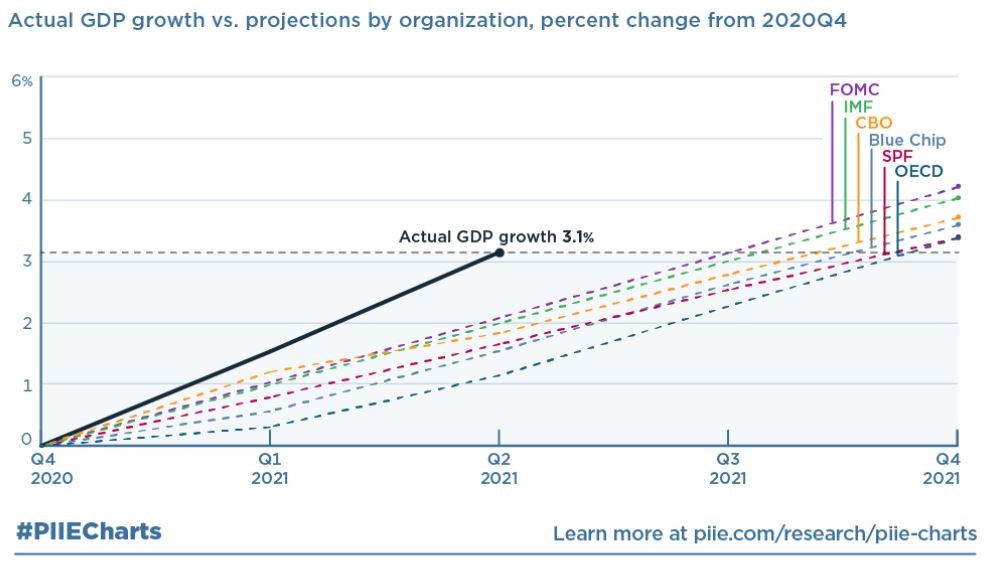FXOpen

The new trading month started with the market participants focusing on Friday’s NFP report. Because the Federal Reserve of the United States has a dual mandate, one that focuses on both price stability and job creation, the way the labor market performs is viewed as decisive for the future path of monetary policy.
While inflation has reached the Fed’s target, there is still a lot of room for improvement in the labor market. Fed’s definition of full employment leaves room for more strength before the rates could be lifted.
In the middle of last week, the Fed signaled that it is in no rush to lift the rates. Most likely, it remains intentionally behind the curve, wanting to see more strength in the labor market before acting.
But inflation and economic growth may trigger action from the Fed sooner than the market expects. We’ve seen the Gross Domestic Product released last week coming out much stronger than the expectations.
US GDP Grows Much Faster Than Forecasters Expected
The chart above shows a projection for the US GDP made by various institutions in the last quarter of 2020. All of them, including the FOMC, IMF, and OECD, have underestimated the growth of the US economy.
As it turned out, the actual growth path out of the economic recession is much steeper, with positive spillover effects for the main US trade partners. Because the United States is the largest economy in the world, a stronger economic recovery there is enough to add one percentage point or more to global growth.
Before the passage of the America Rescue plan, most forecasters expected that the economy would grow by 3/4%-4.2% in the four quarters of 2021. But the data released last week shows that the economy grows at an annualized rate of 6.4%, much higher than expected.
The solid growth should support the equity markets and keep the US dollar offered. Because most central banks in the developed world have adopted similar monetary policies, which are still loose, the market is dominated by risk-on/risk-off gyrations. Until we see central banks lifting rates, the chances are that the markets will remain correlated.
This article represents the opinion of the Companies operating under the FXOpen brand only. It is not to be construed as an offer, solicitation, or recommendation with respect to products and services provided by the Companies operating under the FXOpen brand, nor is it to be considered financial advice.







